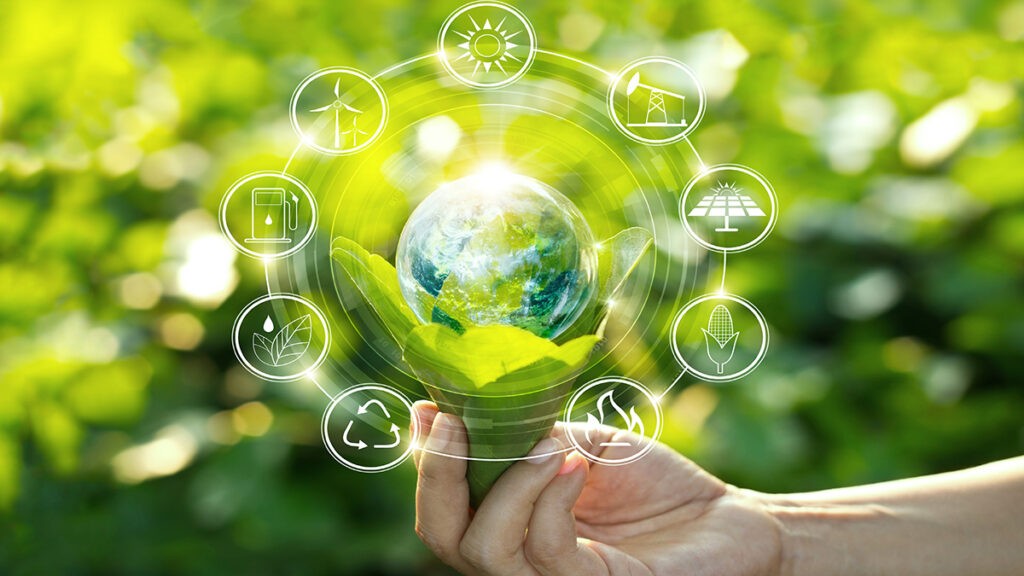Moments of reckoning are financial crises. They frequently compel governments and institutions to take brave, decisive action, disrupt lives and livelihoods, and expose weaknesses in our economic systems. However, crises provide a unique opportunity to rethink and rebuild, in addition to the immediate suffering.
Many are questioning whether financial crises can serve as catalysts for a green economic reset as the world grapples with overlapping challenges, including climate change, inequality, pandemics, and debt. **
The answer is affirmative—provided that we acknowledge crises as turning points that can **reshape our economies toward sustainability, equity, and resilience**, rather than merely as exigencies to be managed.
The Reasons for the Significance of Crises
History has demonstrated that significant crises frequently result in profound structural transformations. The welfare state and financial regulation emerged following the Great Depression. Following the 2008 financial crisis, there was an effort to implement banking reform and more prudent fiscal policy.
However, those restorations were notable for their lack of climate action.
The necessity of aligning our economic models with planetary limits has never been more apparent, given the post-pandemic recovery and the escalating frequency of climate shocks, including heatwaves, wildfires, and flooding.
**Crises dismantle the political and financial inertia that frequently impedes progress.** They enable us to consider the type of economy we wish to reestablish.
The Green Reset Vision
A green reset involves the utilization of policy reform and recovery spending to:
* **Develop climate resilience** * **Invest in sustainable, inclusive industries** * **Transition away from fossil fuels** Expand the definition of prosperity to encompass environmental and social well-being.
It is not solely about the addition of green employment or the planting of trees. From budgeting and taxation to trade and innovation, the objective is to integrate sustainability into **every stratum of economic policy**.
Pillars of a Green Reset
1. **Public Investment in Green Technology**
Public spending is a significant source of influence for governments. In moments of crisis, stimulus packages should prioritize:
* Energy efficiency enhancements in buildings * Public transit and electric vehicle adoption * Renewable energy infrastructure * Sustainable agriculture and circular economy initiatives*
Public investments have the potential to attract private capital, expedite the creation of jobs, and establish the foundation for long-term resilience.
2. **Sustainable Fiscal and Monetary Policies**
* Eliminate fossil fuel subsidies and **implement carbon pricing** to accurately represent the cost of emissions.
* Utilize **sustainability-linked debt** and green bonds to finance recovery initiatives.
* Central banks have the ability to integrate **climate risk** into asset purchases and financial supervision.
These instruments guarantee that climate objectives are incorporated into the core of macroeconomic decision-making.
3. **A Fair Transition**
The transition to green economies must be equitable. This implies that:
* **Providing retraining and support to workers in high-emission industries** to ensure their safety.
* Guaranteeing that **low-income communities** are able to capitalize on renewable jobs and clean infrastructure.
* By providing financial assistance and technology transfers to **climate-vulnerable nations**.
Climate ambition and social equity must be mutually reinforcing.
4. **Global Finance Reformation**
An update is required to the international financial architecture:
* Climate adaptation and mitigation should be the primary focus of multilateral development institutions. Climate metrics should be incorporated into the lending criteria of the IMF and World Bank.
* **Debt-for-climate swaps** can assist significantly indebted countries in investing in sustainability without exacerbated fiscal pressure.
Global issues necessitate global instruments, and finance must be incorporated into the solution.
Acting for the Future, Learning from the Past
The COVID-19 pandemic served as an example of daring public intervention. In order to sustain economies, trillions of dollars were mobilized. However, only a small portion of these funds were allocated to climate-positive investments.
We are unable to afford to make the same error again.
We must be prepared with **a green playbook** as the next financial crisis approaches, whether it is caused by market instability, geopolitical tensions, or climatic shocks. a **transformational agenda** that is not merely transient relief, but rather one that is driven by political will and fiscal space.
Final Thoughts: Crisis as a Catalyst
Each crisis induces hardship. However, it also provides an opportunity to pause, contemplate, and refocus.
The subsequent time the economic system experiences instability, we should refrain from attempting to reconstruct the previous system. We should construct an improved version that is **more equitable, cleaner, and future-proof**.
A green reset is not a pipe fantasy. It is a strategy that is awaiting our decision to take action.

Leave a Reply